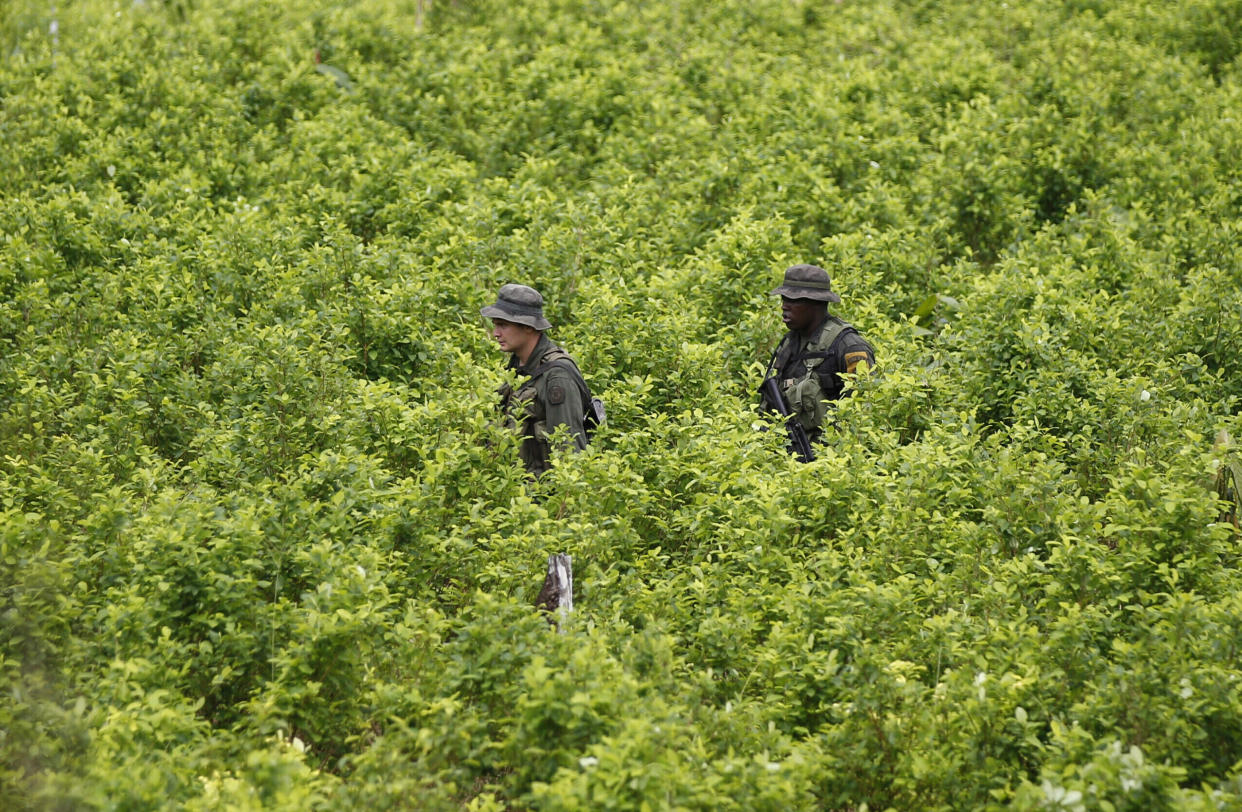UN says Colombia's coca crop at all-time high as officials promote new drug policies

BOGOTA, Colombia (AP) — Coca cultivation reached an all-time high in Colombia last year, the U.N. said, as the administration of President Gustavo Petro struggles to reduce poverty in remote areas and contain armed groups that are profiting from the cocaine trade.
The new findings on coca growing were published over the weekend by the United Nations Office on Drug and Crime, which said 230,000 hectares (nearly 570,000 acres) of farmland in Colombia were planted with coca in 2022, a 13% increase from the previous year.
The South American nation is the world’s largest exporter of cocaine, which is made from coca leaves. Colombia provides 90% of the cocaine sold in the United States each year.
Colombia’s government said Monday that the amount of land planted with coca is increasing at a slower pace than in previous years. It hopes new programs that provide greater economic incentives for farmers to adopt legal crops will help reduce cocaine production in coming years.
“We are flattening the curve,” Justice Minister Nestor Osuna said at a news conference, referring to the 13% annual increase in land planted with coca. He noted coca cultivation in Colombia rose more than 40% from 2020 to 2021.
On Saturday, President Gustavo Petro, whose government has decreased coca eradication targets, criticized U.S.-led efforts to fight drug production by eradicating coca crops, calling the approach a failure.
Speaking at a Latin American conference on drug policy organized by his administration, Petro urged Colombia’s neighbors to change their approach to drug policy. He said drug use should be approached as a “public health problem” and not a military problem.
“We have to end the disastrous policy that blames farmers (for cocaine production) and doesn’t ask why in some societies people consume drugs until they kill themselves,” he said. “Drugs are replacing the lack of affection and loneliness.”
According to the annual U.N. report, coca cultivation in Colombia expanded the most in border areas, where cocaine is easy to transport and export, specially the province of Putumayo, along Colombia’s southern border with Ecuador.
U.N. officials said coca production had diminished in Colombia’s interior due to decreases in the price for coca leaf, saying that is presenting officials with an opportunity to enroll farmers in crop substitution projects.
“We have to work on strengthening legal economies” in isolated areas “and not just attacking illicit economies,” said Leonardo Correa, the regional coordinator for the U.N.’s coca monitoring system.
Colombia's coca crop went down slightly from 2017 to 2020, following a peace deal between the government and the country's biggest rebel movement, the Revolutionary Armed Forces of Colombia. But planting has risen since then as smaller armed groups that profit from the drug trade take over territory that was abandoned by FARC fighters.
The justice minister said Colombia plans to tackle cocaine production by improving education, health and infrastructure in a handful of areas that are teeming with coca crops.
“The success of our drug policy should be measured in terms of the reduction of violent crime, and the reduction of poverty in those regions where coca is cultivated,” Osuna said.


